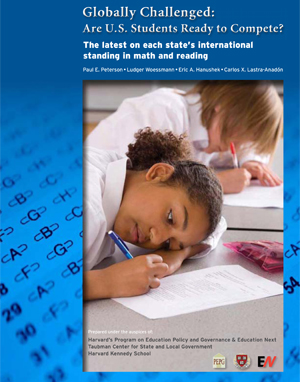Media
What Do France, Hungary and Pennsylvania Have in Common?
 A Hungarian, a Frenchman and a Pennsylvanian walk into a bar…okay, so they may not have the same tastes in beer, but turns out they would have the same ability to solve a high school math problem.
A Hungarian, a Frenchman and a Pennsylvanian walk into a bar…okay, so they may not have the same tastes in beer, but turns out they would have the same ability to solve a high school math problem.
The latest international comparison of student achievement in math and reading is out, and as usual, the United States languishes somewhere in the middle for comparable industrialized countries: 32 percent of students are proficient in math, while 31 percent are proficient in reading. Korea, Japan, Canada and Germany all outdo the U.S. in each category.
The results come from Harvard’s Program on Education Policy and Governance, which compares individual U.S. states with countries around the world. The authors use NAEP scores to estimate proficiency levels in the Program for International Student Assessment (PISA) test, which scores students in 65 of the world’s school systems.
The Keystone State does somewhat better than the U.S. average, scoring eighth in America for math proficiency (38.3 percent proficient) and 10th in reading (36.4 percent proficient). Yet, Pennsylvania scored worse than 20 nations in math (including Iceland, Slovenia, and Estonia) and worse than 10 competitor nations in reading.
The fast-paced integration of the world economy means today’s youth are competing for tomorrow’s jobs not just with others in Pennsylvania or the U.S., but with people all over the world. The Harvard authors point out that performance on academic tests is closely related to long-term economic growth. If America could raise its math proficiency to the levels of Canada or Korea, for example, that would result in a U.S. growth rate between 0.9 and 1.3 percent—or about $1 trillion a year projecting out 80 years.